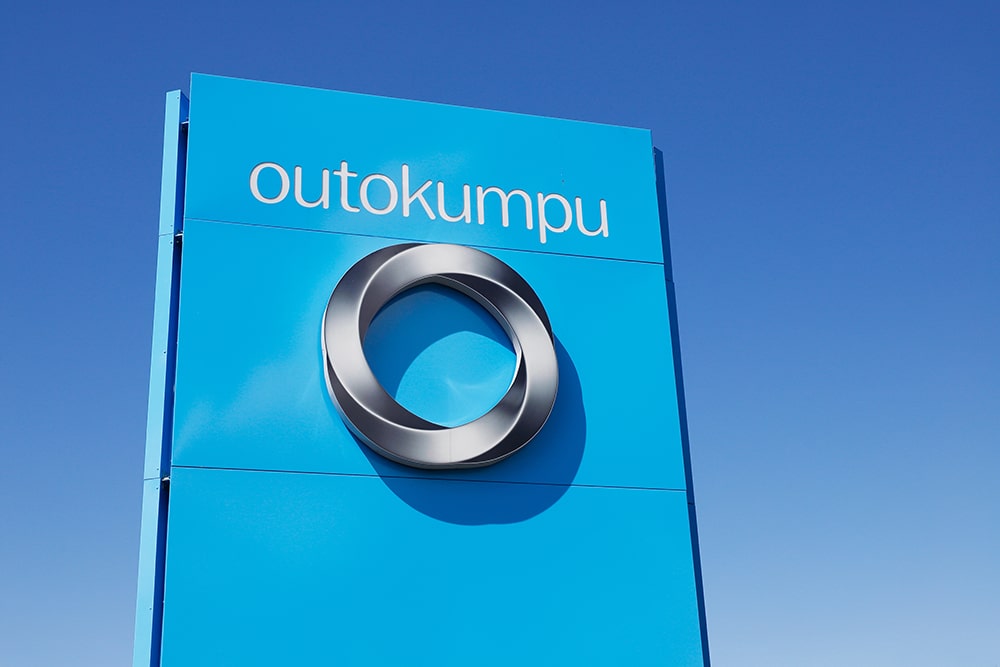Speaking at the Chicago chapter of the Association of Women in the Metals Industry’s (AWMI) most recent dinner, Outkumpu Business Area Americas CEO and President Tamara Weinert highlighted the many challenges facing domestic stainless producers. She also commented on the global stainless steel price, the company’s overall outlook, and its path toward a greener future.
Don’t settle for stagnant savings. MetalMiner’s custom price forecasting unlocks the true potential of your stainless volume commitments, ensuring you maximize profit. View our full metal catalog.
Outokumpu Anticipates Sideways Stainless Steel Prices
Domestic stainless steel prices have largely trended sideways since the start of the year. Base prices remain unchanged from 2022, leaving only the surcharge to fluctuate. Still, the recent sharp drop in nickel prices has meant increasingly cheaper surcharges. Meanwhile, over-purchasing following a long period of allocations led to a buying hiatus for many manufacturers, offering no room for producers to raise base prices.
Despite these price trends, Weinert spoke optimistically of a U.S. economy that has proven more resilient than expected, thus helping to stabilize the current market. She mentioned that Europe continues to fare worse following the combined headwinds of post-pandemic recovery and the Russian war in Ukraine. Here in the U.S., Weinert expects the sideways stainless steel price trend from 2023 to persist, adding that the medium and longer-term outlooks appear more positive, although risk factors remain.
Risks to the Stainless Steel Market
China’s economy remains a significant risk point for producers like Outokumpu. Cost pressures, particularly from Asian imports, continue to threaten demand for higher-standard stainless material. Even with current protectionist measures, imports only represent around 25-35% of domestic consumption. However, that import ratio does not include end-use products that contain stainless steel, putting even more pressure on domestic manufacturers. Finally, imports of end-use products built with cheaper but dirtier stainless steel, like appliances, continue to inhibit overall demand for stainless steel in the U.S. and elsewhere.
During her talk, Weinert directed attention toward China’s stimulus measures, which have primarily targeted the industrial sector rather than consumers. After all, overcapacity in China impacts a wide range of products and materials, including stainless steel. This mainly translates to increasingly competitive prices even though consumer demand in China remains unsupported, leaving risks of a supply glut invariably finding its way to the international marketplace. That said, a sustained turnaround in Chinese demand would provide knock-on effects globally.
Meanwhile, inflationary pressures continue to direct the Federal Reserve’s “higher for longer” interest rate policies, which could potentially impede demand in the U.S. A dovish pivot would invariably prove supportive of stainless steel prices. However, the timing of rate cuts remains uncertain.
Outkumpu Sees Necessity of Protectionist Measures
Imports from Asia largely benefit from using more environmentally unfriendly raw materials, namely nickel pig iron. Beyond that, heavy industry subsidization, particularly in China, often allows those producers to sell material at a loss into markets like the U.S. and Europe.
Combined with the use of cheaper-but-dirtier coal throughout the supply chain and more lax regulatory and safety requirements from many producers in countries like China and Indonesia, producers like Outokumpu rely on protectionist measures to remain operational. Weinert also expounded upon the benefits of the U.S.-Mexico-Canada Agreement (USMCA), “buy American” measures, and section 232 tariffs as helping maintain the U.S. as a profitable and viable market for Outokumpu.

Outokumpu primarily uses recycled material as the leading feedstock. It also utilizes a smaller volume of raw materials like primary nickel to achieve the proper chemistry. Although “greener,” the company’s process remains more costly than that of its competitors in China. However, Outokumpu remains undeterred in its environmental ambitions. It even recently acquired a stake in a Canadian nickel mine for supply, despite Indonesian-sourced nickel being far cheaper.
Outokumpu expects infrastructure efforts in the U.S. to remain supportive of domestically produced stainless steel. It also anticipates that electrification efforts and expanding global access to renewable energy will offer steady demand in the coming years. Weinert noted that “There is a good outlook for many years to come.” When asked about Outokumpu’s expectation of a continued and growing demand for green steel, she stated that “The macro trends are very very positive.”
MetalMiner helps stainless buying organizations better manage margins, smooth price volatility and generate cost savings. Find out how in our May interactive chat session “MetalMiner Introduction: From Price Data to Forecasting to Cost Modeling”.
Europe’s CBAM Leaves Many Questions
For her part, Weinert sees greater threats to European stainless steel producers, stating that “the protection at the borders is not that good.” Despite the institution of the Carbon Border Adjustment Mechanism (CBAM) in Europe, Weinert noted that the “jury is still out…because there is so much that is not decided yet.”
The EU designed CBAM as part of the European Green Deal to create a tariff on carbon-intensive products imported into the EU. The border tax will apply to imported materials (including steel) with a higher carbon footprint than material produced in the EU. Essentially, the CBAM intends to level the playing field for producers with higher standards.
.
However, the CBAM does not currently appear to target raw materials. Weinerted noted, “The footprint for stainless steel is 80% out of raw material.” Without including raw materials in the CBAM calculations, the carbon tax will offer little support to producers like Outokumpu that remain committed to utilizing inputs like “green nickel.”

If the tax is high enough, the CBAM could prove an effective safeguard for European metal production. However, It would remain useless if raw materials are not considered part of the import tax. Still, conflicting interests between EU member states could pose an obstacle to including those considerations.
CBAM’s Impact on U.S. Stainless Steel Prices, Market
No market operates in a vacuum, which means protectionist measures from one country or continent invariably impact the larger global marketplace. For the U.S., the risks of the EU’s CBAM, which takes effect in 2026, could mean a shift in trade flows once destined for Europe. Weinert stated that she sees a potential downside risk for stainless steel prices in the U.S. if that influx of dirtier stainless steel becomes redirected to the North American market. Furthermore, such an impact could prove even more profound if Chinese demand fails to see a more meaningful turnaround.
AWMI’s Role in the Metal Industry
Are sneaky, stainless surcharges causing concern? Make sure your base prices are held fixed. See how service centers take advantage of stainless buyers.
As host of the evening, the Chicago chapter of the Association of Women in the Metals Industry deserves special recognition for curating the opportunity for men and women within metal and manufacturing industries to engage with distinguished speakers like Tamara Weinert. The tireless efforts of the organization’s countless volunteers offer monthly events for all within the metal industry to network and build relationships. It would be remiss not to mention the organization’s dedicated efforts in promoting an inclusive and supportive environment, especially for women, to grow and thrive in their career paths. For more information on future events and how to become part of the community, please visit the AWMI website to find a local chapter.




